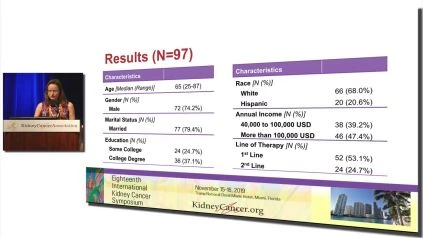Patient-reported ECOG performance status (PS) is lower than oncologist-reported PS and is associated with worse psychosocial outcomes. Cristiane Decat Bergerot, PhD Psychologist, Postdoctoral Fellow City of Hope Comprehensive Cancer Center And colleagues Paulo Bergerot, MD; Errol Philip, PhD; JoAnn Hsu, BS; Nazli Dizman, MD; Meghan Salgia; Dena Battle; Ulka Vaishampayan, MD; Matthew Loscalzo, LCSW; William Dale, MD, PhD; Sumanta K. Pal, MD Filmed at the 18th International Kidney Cancer Symposium 2019, Miami, FL.
Â
Â
cancer research, toxicity and response criteria of the eastern cooperative oncology group ecog
About ECOG Performance Status:
To conduct clinical cancer treatment trials effectively across several participating hospitals, cancer centers, and clinics includes the use of common measures to assess how the disease affects the everyday living abilities of a patient (known to doctors and researchers as the success status of a patient). One such metric is the ECOG Quality status scale. It defines the level of functioning of a patient in terms of their ability to care for themselves, their everyday activity and their physical capability (walking, working, etc.).
The ECOG Success Status is taken into account by researchers worldwide while conducting trials to test a new type of treatment. A scale of numbers is one way of identifying the population of patients to be tested in the experiment, so that it can be replicated equally among the doctors who enroll patients. This is also a way for the doctors to monitor improvements in the degree of functioning of a patient as a result of treatment during the trial.
The scale was developed and published by the Eastern Cooperative Oncology Group (ECOG), which is now part of the ECOG-ACRIN Cancer Research Group, in 1982. It circulates inside the public domain and therefore is available for public use. It is shown below for both future reference and to encourage more standardization among researchers designing and assessing clinical research into cancer.
ECOG Performance Status Established by the Eastern Cooperative Oncology Organization, Robert L. Comis, MD, Organization Chair. * GRADE ECOG PERFORMANCE STATUS 0 Completely engaged, capable of carrying on all pre-disease function without restriction 1 Limited in physically strenuous yet ambulatory operation and capable of performing work of a light or sedentary nature, e.g., light house work, office work 2 Ambulatory work and cap. The Eastern Cooperative Oncology Group criterion for toxicity and reaction. Am Oncol in J Clin. From 1982;5:649-655.
Comparing the ECOG performance status with the Karnofsky performance status The ECOG performance status and Karnofsky performance status are two commonly used ways of determining a patient’s functional status. For several years, both measures have been in the public domain as means of classifying a patient according to their functional condition, measuring treatment effectiveness and determining a patient’s prognosis. The Karnofsky measure, ranging from 100 to 0, was published in a textbook in 1949. * In 1960, core elements of the ECOG scale first appeared in medical literature * * There are many ways of measuring these scales. The table below shows one analogy which is widely used.
ECOG Health STATUS KARNOFSKY Health STATUS 0— Completely engaged, capable of carrying on all pre-disease function without restriction 100—Good, no complaints; no proof of disease 90—capable of carrying on normal activity; mild signs or symptoms of disease 1—Restricted in physically strenuous yet ambulatory activity and capable of carrying out work of a light or sedentary nature, e.g., light housework; 2—Ambulatory and capable of all self-care but unable to carry out any work activities; up to and beyond 50 percent of waking hours 60—Requires occasional assistance but is capable of caring for the majority of personal needs 50—Requires substantial assistance and regular medical treatment 3—Capable of self-care only limited; confined to bed or chair more than 50 percent of waking hours 40—Disabled;5—Dead 0—Dead

